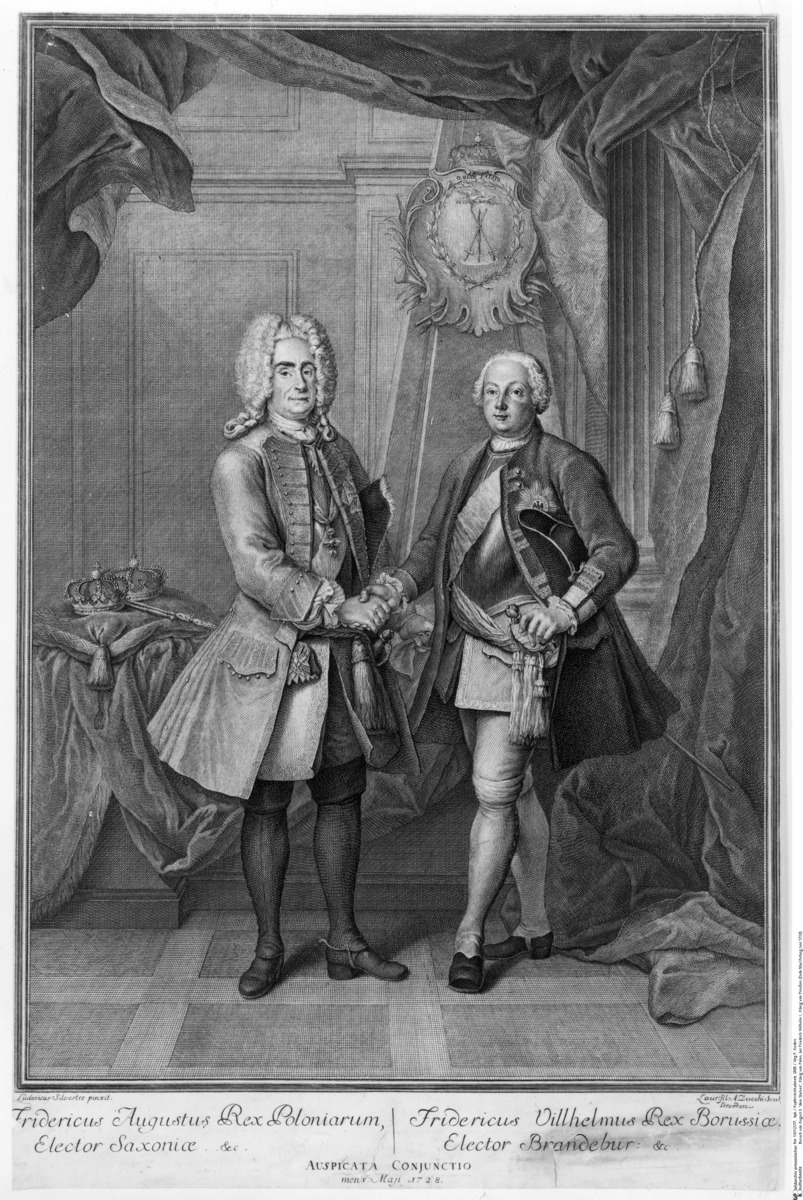Abstract
During the seventeenth and eighteenth centuries, the German
territorial princes endeavored to strengthen their principalities by
taking advantage of the chaos caused by the Thirty Years War, the
campaigns of Louis XIV, and the struggle against the invading Ottomans.
The two rulers shown here were radically different in terms of
temperament but equally tenacious in the pursuit of aggrandizement.
August II (“the Strong”) of Poland (left) was given to a restless and
lavish lifestyle. In 1694, he succeeded his brother as Elector of Saxony
(having done so under the name Frederick August I of Saxony). Three
years later, after converting to Catholicism to ensure both Polish and
Austrian support, he convinced the Polish nobility to elect him king of
Poland. (It should be noted that the venture also required the payment
of substantial bribes.) In 1706, he lost the Polish crown during the
Second Northern War but managed to reassert his rule there in 1709 –
with thanks being owed, in no small part, to Prussian support.
Frederick William I (“the Solider King”) (right) was averse to pomp
and squandering. He made few territorial gains but was more successful
than August in achieving an absolutist form of government. Embracing the
Pietistic virtues of duty and hard work, he created a greatly expanded,
highly disciplined army and an efficient, frugal bureaucracy. To raise
state revenues, he established mercantilist policies and fostered
internal colonization (e.g., by settling the Salzburg Protestants in
East Prussia). Despite his epithet, he avoided – apart from besieging
the Swedes in Stralsund in 1715 – all warfare, sparing himself and his
realm its state-crippling burdens.
